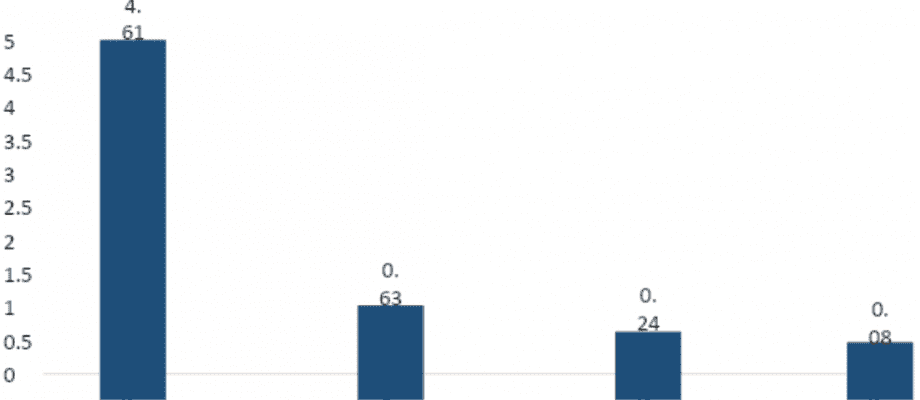In his guest article, Felix Novotny addresses the question of the extent to which Bitcoin and Co. can offer a way out of the problems of fiat currencies.
One record chases the next
By the current bull market at the latest, most of the critics of Bitcoin should have realized that this is not a short-term hype, spurred on by people who want to revolutionize the payment system, but an idea that can no longer be ignored. With the addition of other figureheads such as Microstrategy and Tesla, or the recent IPO of Coinbase, the entrepreneurial and financial world is now finding increasing interest in digital gold, which sometimes helps to drive up the prices of crypto currencies.
Social tokens – the next big thing?
Investment trend: social tokens
Find out more in the leading magazine for blockchain and digital currencies
(Print and digital)
☑ 1st edition free of charge
☑ Over 70 pages of crypto insights every month
☑ Never miss out on investment opportunities
☑ Free postage to your home
To the crypto compass magazine
In order to understand the interest in crypto currencies, it is worth taking a look at the current monetary system, which is currently being put to the test – especially through cheap money. Whether it is Bitcoin, Ether, XRP, or a token influenced by the masses like Dogecoin, cryptocurrencies offer one thing above all: a way out.
Does the economy depend on cheap money?
The most important industrialized countries are based on a fiat money system that, by definition, allows central banks to create money out of nothing. Among other things, this system has the advantage of controlling the amount of money to a certain extent. This is exactly what is particularly evident in times of economic downturns, as is currently practiced by the Federal Reserve in the USA or the ECB in Euroland to counteract the economic downturns triggered by the ongoing COVID-19 chaos. This newly created money will serve to stimulate the economy and encourage both individuals and companies to increase consumption and investment.
Historically, this approach, based on the USA, made sense throughout: If you look at Figure 1, it can be seen that, in simple terms, every single US dollar of newly borrowed debt in the period from 1947 to 52 was well over 4 US dollars. Generated dollars in GDP. However, 50 years later, in the mid-2000s, every US dollar in new debt represents only $ 0.08 in GDP growth. Due to this effect of decreasing marginal utility, successes can be achieved in the short term, but these have a negative effect on the monetary system in the long term. The steady expansion of the money supply, extensive stimulus packages and a low interest rate policy are creating a cycle that is very difficult to end, since a sudden end to the provision of liquidity or a rise in key interest rates would probably lead to greater unrest in the economy.
BTC-ECHO Magazin (5/2021): Social Token – the next big thing?
The industry magazine for Bitcoin and blockchain investors.
Exclusive top topics for a successful investment:
• Investment trend: social tokens
• Coinbase IPO
• The 5 Biggest Bitcoin Crashes
• Market analysis from a professional trader
• Bitcoin mining with hashrate tokens
Order free copy >>
High inflation is not a solution either
The resulting problem is a potential excess of inflation. Common definitions of inflation are mostly limited to the resulting symptoms, but leave out the causes. However, this looks at only one side of the equation and leaves out the underlying reasons for the growth rate, mistaking the effect for the cause, primarily due to overly expansionary monetary policy.
In addition to the effect of increasing the price level, there is also a redistribution of wealth. According to the Cantillon Effect, the beneficiaries of new money after monetary expansion are those who receive the money first. Those can continue to use it at the old price level, and only after money begins to circulate in the economy will prices gradually be corrected.
My personal view is that inflation is neither desirable nor necessary, that the most effective path to development is through free enterprise and private investment, and that government can best serve by limiting itself to essential government functions, keeping taxes of all kinds low, from Does not intervene in the economy and offers a stable monetary framework.
Milton Friedman (1971)
Hard currencies in critical times
Since many of the established cryptocurrencies take a deflationary approach, the amount of money cannot be determined arbitrarily, which makes it a harder currency. Even if the original idea of Bitcoin, that of a purely electronic peer-to-peer payment system, currently with uneconomical transaction fees, or a limited transaction volume, is not made possible, Bitcoin and other cryptocurrencies still offer a way out of the excessive process of increasing money and it remains to be seen how investors react to further central bank actions.
How do I buy Bitcoin? Guide and provider comparison 2021
We explain quickly and easily how you can buy Bitcoin safely and cheaply and what you should pay attention to!
To the guide >>
